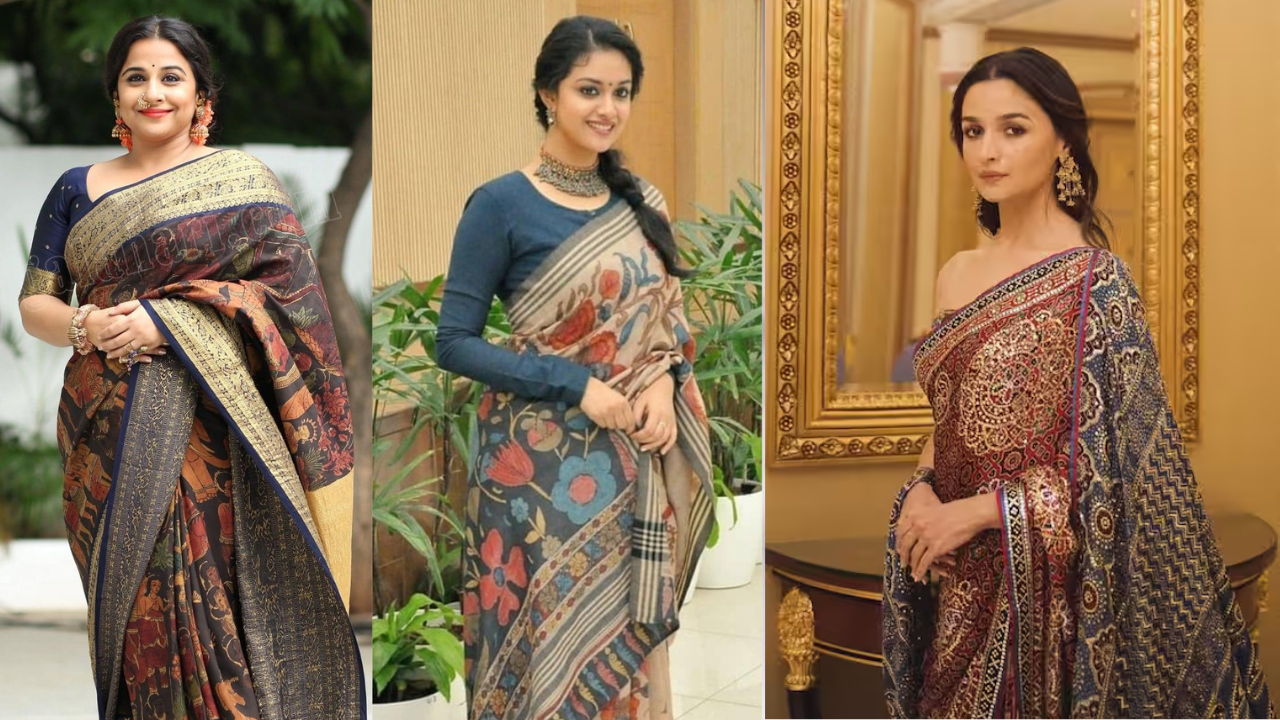For years, our fashion was predominantly influenced by the west. From silhouettes, prints, colours, accessories, looks and even style- ours aligned itself to their form of expression. Even though India has the best artisans, textiles, and techniques, we were drawn by what was “imported”. But this trend has certainly seen a shift. With Indian designers on top of their game, the fashion scene has evolved. And with that, we have also seen a rise in the use of Indian fabrics, for instance, hand-block prints, Kalamkari, Ajrakh, and tie-and-dye.
Prints are an integral part of fashion. From bold florals to geometrics, fabrics tend to tell a story with prints. And like trends, prints too have a season. Summers call for the bright, bold and colorful ones while the autumn season wants a cool, serene print.
Prints also reveal a lot about the person wearing it. Personalities can be drawn out by observing what a person chooses to style themselves with. A lot of millennials today are bringing back Indian textiles in fashion.
One can choose prints according to their body type as well. Prints and patterns, if chosen wisely can work to accentuate different body shapes. For example, women wide at the hips (pear shape) are generally advised to avoid wearing any prints in the bottom half of the outfit. If you identify with this body description, opt for a printed top with dark coloured denim or pants. If you’re heavier around the bust, then small prints are good for your tops. A busy print or large motifs will bring more attention to a big bust. But a pair of Kalamkari palazzos or bandhani skirt will be perfect.
Most forms of Indian prints use natural or vegetable dyes. This also makes it more organic and eco-friendly. Learn a little more about the trending prints:
Kalamkari : This is a kind of hand painting that involves a free hand drawing of the design on the fabric using a special pen. This technique of hand-printing involves 23 steps beginning with bleaching, dyeing, painting and ends with starch and cleaning. The design is created using natural dyes and the prints are mostly motifs of peacock, flowers, birds and the like.
Hand-block prints: As the name implies, this printing techniques is a handmade printing method. A wooden block is carved from Sheesham wood according to the design. A traditional print would use 2-3 blocks to create one design. The first gives the outline of the motif, next is the first filler which gives the fabric its base, then filler for another colour.
Ajrakh : A very popular print today, Ajrakh is a type of hand printing with the colours crimson red and indigo blue. A beautiful combination in itself, the colours are the most prominent feature. The process of printing an Ajrakh is a long and tedious one. From treating the cloth to resist printing and getting finally ready, the method involves over 30 steps.
For years now, these prints have been a part of every Indian woman’s wardrobe. The prints were popular among the strata of women who preferred wearing traditional Indian attire. But now, the market has expanded. Indian prints are seen on dresses, crop tops, shorts, blazers, accessories – you name it. This influx is great for the traditional techniques to gain momentum and bounce back onto the fashion bandwagon.
It opens up the shelves for more Indianised clothing which is the trend today. The millennial generation is looking for ways and means to collaborate the freshness of today’s fashion with the richness of our heritage. The use of such prints promotes the thought process further. A lot of Indian designers have revived a number of printing techniques to bring it forth. In addition to that, when celebrities and film stars are spotted wearing such clothing, it is only a matter of time before the trend takes on abundant following.
Upcycling your mother’s old kalamkari saree into a flowy maxi or a long open cape will surely get you on the right track. It’s simple, weather-approved and most connected to your grand culture.

